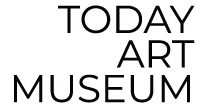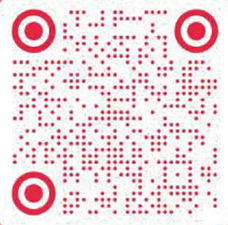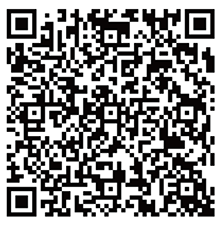This selection of German media artists is intended to showcase the general trends in media art, together with its key phases and principal exponents.
Media art in the modern sense was first incorporated into art towards the end of the 1960s. Photography and film formed the classical media, whilst video and computer comprised the new media. Initially this new media was applied to chronicle actions, performances, land art and process art.
Consisting of seven interactive plasma screens, the work by Jürgen Klauke "I Go I Stand” from 2003, documents, on the one hand, the action-theatre typical of the artist, whose body-centredness continually interrogates gender identity and challenges the norms of social conventions. On the other hand, its installational character serves to transform the documentation into an autonomous video installation. This work also casts the spotlight on a phenomenon originating back in the 1970s: the progression from the playing of videotapes on one monitor to a multichannel installation comprising several monitors.
The cinematographic output of Marcel Odenbach derives from the same generation as that of Klauke. However, in contrast to Klauke, rather than focussing on the body as an artistic object, Odenbach explores the socially encoded norms informing our perception of memory. Here too gender identity plays a role, but is incorporated into bio-politics, ie. as a form of social encoding and normalization. From his study of bio-politics, he formulated a theory of the state's monopoly of power which he then analysed critically in order to assert the priority of individual freedom. Odenbach's work takes the form of an appeal to the emancipated observer who, on contemplating the present and its ties to the past, may be inspired to adopt a categorical position. Conceived especially for the Vienna Kunsthalle in 2016, Odenbach's 2-channel video installation “Proof of Nothing” takes as its subject the memorial designed in 1951 by Fritz Cremer for the former Buchenwald Concentration Camp on Mount Ettersberg near Weimar, which was erected between 1954 and 1958. In the approximately 15-minute filmic encounter with the monument, Odenbach studies the question of how memory and history are visualised and ideologised. The title of Odenbach's work alludes to Ingeborg Bachmann's eponymous poem.
The political character of the first generation of video artists is underscored most forcefully in the work of Harun Farocki. A former avantgarde filmmaker and director of TV films, Farocki is, together with Alexander Kluge, one of the co-founders of the German film and video essay. As the dominant ascendancy of mass culture began to curtail his opportunities of working in this field, he retreated into the exile of the museum. Yet here too, his perspective remained essayistic and cinematographic in nature, and he focused his gaze specifically on the codes of perception, ie., on the question of how our view of the world is constructed and controlled through machine-based perception.
Farocki's video installation “Workers Leaving the Factory in Eleven Decades” from 2006, comprises 12 monitors connected in parallel. In this 36-minute sequence of video images, beginning with Lumières "La Sortie de l'usine Lumière à Lyon" [Workers Leaving the Factory] from 1895, he depicts different variants of workplace situations drawn from the history of film. The piece was produced for the exhibition “Cinema Like Never Before” organised by the Generali Foundation in Vienna in 2006.
In all of these works, movement and perception, machines of mobility and perception all converge. Video and film were no longer antagonists like Cain and Abel, but brothers and sisters from the family of moving images.
Consequently, specific structures soon emerged, inherent properties of the medium, such as real-time and time-delayed transmission, electronic and magnetic manipulation etc., which evolved into the autonomous art medium of video. Narrative cinema is the art of illusion, and with 24 frames per second running through the projector, the illusion of motion can be conjured. The avantgarde film, in contrast, was anti-illusionary. It took as the starting point of its artistic considerations the technical conditions, the conditions of perception and the materiality of the celluloid itself. In the initial phase, and particularly during the 1970s, this anti-illusionary character was driven by video art.
In the 1990s, confronted with the success of the mass media, the art of anti-illusion morphed into the art of allusion. References to the history of film and painting now shifted into sharper focus. Instead of representational art, today's media art has become the art of reference to the existing world of the media (Hollywood films, video clips, quiz shows, news programmes, computer games).
With his 30-minute, 4-channel video installation “My Home Is a Dark and Cloud-Hung Land” from 2011, Julian Rosefeldt excavated the archaeology of German history. The forest features as a dramatised place, whose cultural complexity is staged and commentated on in a theatrical combination of literature, song extracts and sound atmospheres. The title of the work alludes to a quote from the philosopher Theodor Lessing. Romantically charged as the embodiment of a natural paradise and impassioned nationalist sentiment, the forest serves as example with which to suspend the differences between nature and culture. The rear view of the recognisably masculine figure appearing in the image, who by means of a fog machine is generating artificial clouds over the tree tops, recalls ironically Caspar David Friedrich's painting “Wanderer Above the Sea of Fog” (1818), which is regarded as the symbol of German Romanticism. In Rosefeldt's work the traces of painting, as a once primary medium shaping the Romantic-Nationalist concept of history, are expunged. This autonomous form of video art was Rosefeldt's response to the narrative of cinematography.
A similar approach to this new terrain, positioned between theatrical dramatisation, documentation and essayistic voice-over, between dystopia and utopia, is adopted in the work of Clemens von Wedemeyer. In his 39-minute, 10-channel installation "The Cast" from 2013, which was created for the MAXXI in Rome, he dedicates himself to the history of the Italian film city "Cinecittà". Founded by Mussolini on the outskirts of Rome, the studios produced many of the mammoth projects of film history, under the helm of directors ranging from Roberto Rosselini to Martin Scorsese. Playing on the ambiguity of the English word "cast", which, on the one hand, was alluding to the selection of the film cast for the mass scenes, on the other, to the artistic sculptures or film props, and not lastly to the throwing of a stone as a gesture of protest, Wedemeyer highlighted the concealed reality of the culture industry, in which the differences between extras and props appear to dissipate. In collaboration with cultural activists, the members of the Teatro Valle Occupato, formed in 2011 to prevent the closure of the Rome's oldest theatre, Wedemeyer draws a link in "The Cast" between cultural exigencies, political discussion and the protests by the extras which broke out in 1958, when many of Rome's army of unemployed had hoped to be hired for the production of Ben Hur in Cinecittá, and yet were rejected en mass.
Seeking a new form of narration, all the cited video artists can be associated with a method described by Richard Rorty as "philosophy as poetry" (2004).
In her elaborate installation”How Not to Be Seen. A F**king Didactic Educational .MOV File”from2 013, Hito Steyerl reflects mischievously on the genre of the educational video and YouTube tutorials. In this brash and colourful spectacle,which takes the viewer on a journey from playful pixel manipulations to green-screen effects, before finally arriving in the desert at an abandoned military photo-calibration field, Steyerl addresses today's omnipresent surveillance architecture by deconstructing the art of camouflage. She creates an optical game of deception from which the viewer can only find egress through his or her own self-initiative. Here perhaps is the moment to point out that the cited artists are steeped in the tradition of German idealism, ie. of the Enlightenment, despite the occasional Romantic overtones.
With the work "bit.fall" by Julius Popp, conceived between 2003 and 2006 for interior and exterior spaces both in the public sphere and in the museum, we are heralding the age of digital art – or to be exact, the era of digital art as a reflection of nature. The natural element of water is sequenced into individual drops in a combination of engineering and computer art. The fall of the droplets can be precisely controlled. Thus nature becomes completely subordinate to the digital technology, quantifiable, and as such, the form and the number of water droplets is now computable. This computed reality manifests itself as writing in space, with the water droplets forming each letter.
With the works of Hito Steyerl and Julius Popp we are entering the horizon of computer-assisted digital art, the latest form of visual media art. These three phases of media art: 1) anti-illusion, 2) allusion, 3) reference, are graphically showcased in this selection of German media artists.
Today Art Museum: “Arrested Time: New Media Art from Germany” Exhibition Dates: September 17 to November 12, 2017 Opening: September 17, 2017, 11:00 a.m. Curator: Peter Weibel Artists: Harun Farocki, Jürgen Klauke, Marcel Odenbach, Julius Popp, Julian Rosefeldt, Hito Steyerl, Clemens von Wedemeyer

 Bologna Illustrators Exhibition 58th
Bologna Illustrators Exhibition 58th Zhiguan: Wang Zimu Art Exhibition
Zhiguan: Wang Zimu Art Exhibition Seasons of Cezanne The Immersive Experience
Seasons of Cezanne The Immersive Experience Marie de Villein: Behind the Sun
Marie de Villein: Behind the Sun “一粒一世界——北京大学颗粒艺术展”
“一粒一世界——北京大学颗粒艺术展”
 Florentijn Hofman :Celebrate!
Florentijn Hofman :Celebrate! Li Nu: As if Sand Were Stone
Li Nu: As if Sand Were Stone Exhibition customization course | TIM YIP MIRROR children's art class
Exhibition customization course | TIM YIP MIRROR children's art class
 TAM Open Studio / Hello, New Friends
TAM Open Studio / Hello, New Friends WANG SHIKUO/TODAY ART MUSEUM YOUNG ARTIST RESIDENCY IN NEW YORK CITY
WANG SHIKUO/TODAY ART MUSEUM YOUNG ARTIST RESIDENCY IN NEW YORK CITY 2018 third wang shikuo award -- nomination exhibition of contemporary young artists
2018 third wang shikuo award -- nomination exhibition of contemporary young artists











